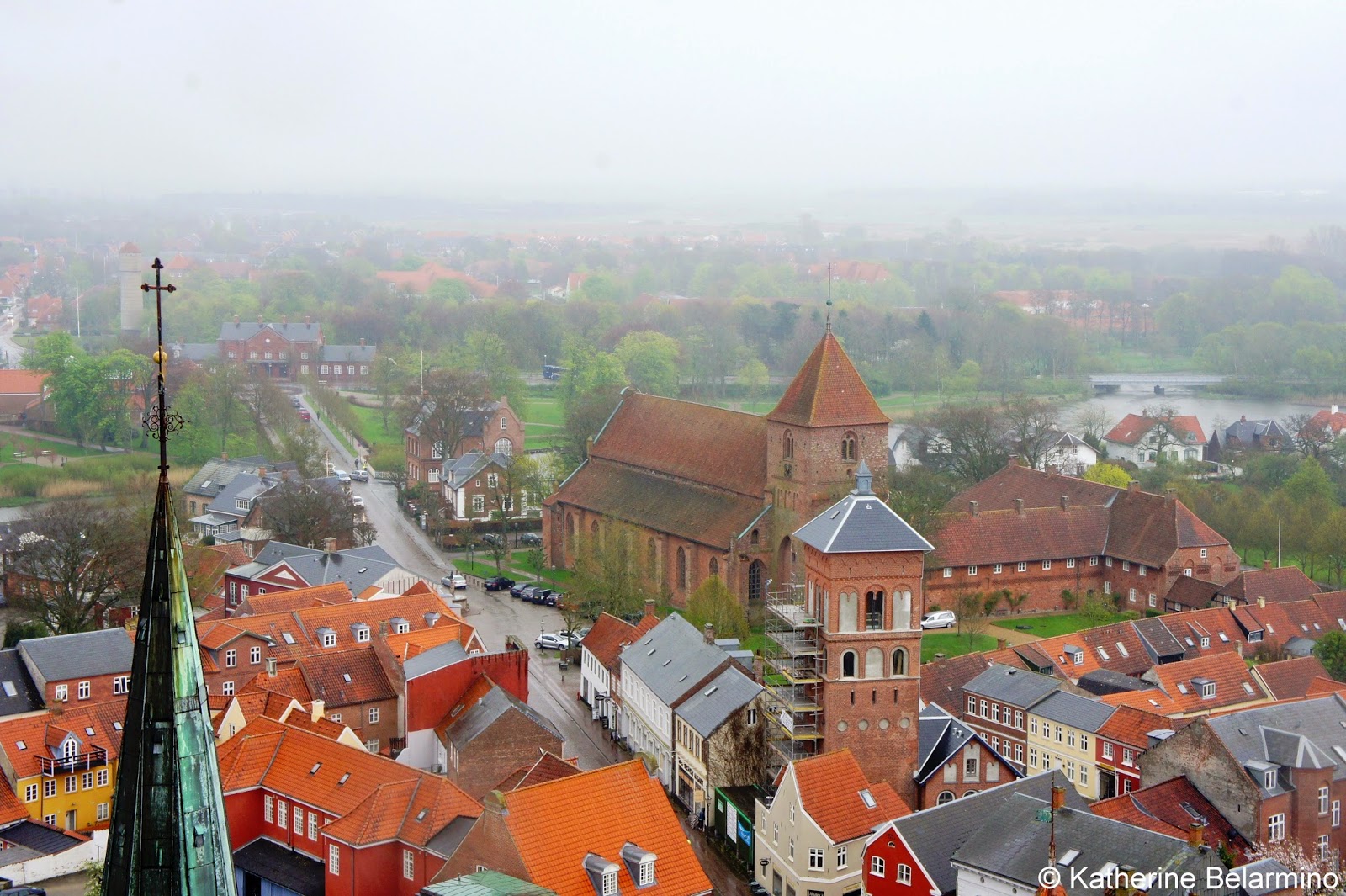Ribe: Denmark’s Oldest and Most Charming Town
 |
| Ribe as seen from Commoner's Tower of Ribe Domkirke. |
Have you ever been to a town that is so cute you just want to pinch its chubby little cheeks? Ribe is Denmark’s oldest town which means, as is true for many ancient towns, it is oozing with charm. With Denmark’s oldest cathedral, oldest town hall, oldest hotel, cobblestone streets (if you can, arrange for them to be slightly wet and shiny from a recent light drizzle), red brick and half-timbered houses topped with mossy roofs, a Viking history, and its very own breed of dog, Ribe will be one of the most delightful stops on your Denmark vacation itinerary.
 |
| Ribe's brick and half-timbered houses along cobblestone streets. |
The town of Ribe started as a Viking marketplace in 700 AD, making Ribe Denmark’s oldest town. Ribe is replete with Viking history. The Museet Ribes Vikinger has some well-done displays reconstructing what Ribe looked like during the Viking Age. There are also exhibits with numerous artifacts found during excavations in and around the town of Ribe. One exhibit features artifacts with religious symbols, illustrating there were Christian Vikings in Ribe 100 years before Harald Bluetooth converted the Danes to Christianity. The entrance fee to Museet Ribes Vikigner is reduced with a RibePas, which overnight visitors can get for free from their hotel.
 |
| A reconstruction of the Viking town of Ribe at the Museet Ribes Vikinger. |
Ribe Domkirke is Denmark’s oldest cathedral. Based on some recently found graves nearby, it is believed there was a church on the site as early as 860 AD. The current Ribe Domkirke was built starting in 1150 and was completed in 1250, replacing the older church. The interior of Ribe Domkirke is an eclectic mix of old and new. There is a bronze font from the 1400s. Some columns are painted with murals from the 1500s. Yet the apse is decorated with colorful stained-glass windows and brightly colored shiny mosaics created by Carl-Henning Pedersen in the 1980s. The Cathedral Museum upstairs displays historical religious items including the bible of Christian III from 1550, which is the first complete Bible to be printed in Danish.
 |
| Ribe Domkirke, an intriguing mix of old and new. |
The architecture of the cathedral is also a hodgepodge of styles as additions were made throughout the centuries. Visitors can climb the Commoner’s Tower built in 1333 for a panoramic view of the town of Ribe and the Danish countryside beyond. The RibePas also provides a discount for visitors to Ribe Domkirke.
 |
| Denmark's oldest cathedral. |
Ribe also has Denmark’s oldest town hall, Den Gamle Radhus, which was built in 1496. The town hall was used as a courthouse until 2006 and is now used for ceremonies. There is a fee to tour the town hall, which is reduced with a RibePas, but since we were visiting off-season, we were allowed to walk around for free. Visitors can walk through the old courtroom and a meeting hall and view medievel weaponry.
Historically Ribe had a night watchman who maintained order in the streets and warned residents of floods and fires. He was distinguished by his uniform, spiked mace, and lantern (an example can be seen in Den Gamle Radhus). 1902 saw the end of the night watchman, but in 1935 Ribe revived the night watchman for tourists. Now visitors can join the 45-minute night watchman tours May through September and the week of Easter to learn more of Ribe’s history.
While walking through the cobblestone streets of Ribe, keep your eyes open for the famous Ribehunden. Ribe actually has its own dog. The Ribe dog is a bastard. I don’t mean Ribe dogs are bad dogs. It is actually required that in order for a dog to be truly considered a Ribe dog, there can be no purebred dogs on its mother’s side going back eight generations. Ribe dogs are small and are usually white with some sort of spots, but obviously because of their mixed breeding none of them look exactly the same. There are 40 to 50 Ribe dogs and their owners meet every year in September in the square.
 |
| One of the famous Ribe dogs. |
Built in 1581, the Hotel Dagmar is Denmark’s oldest existing hotel. We chose instead to stay in the more modern holiday rentals of Ribe Byferie, but if you want to stay in Denmark’s oldest hotel, this is your chance. We ate dinner across the street at Weis Stue, another one of Denmark’s oldest inns, for a very traditional Danish meal of meat and potatoes, washed down with some local beer.
 |
| Traditional meat and potatoes at one of Denmark's oldest inns. |
Ribe is a small town and can easily be seen during a one-night visit, though staying longer certainly wouldn’t hurt. You will surely be enchanted with the slightly sagging half-timbered buildings, the mossy walls, roofs, and streetlamps, the signature dog, and centuries of history.
